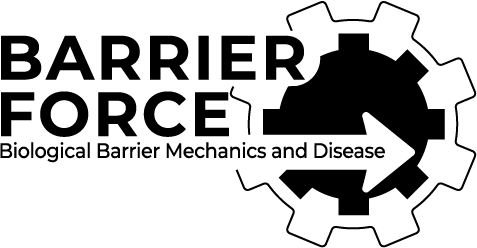Regulation of YAP Promotor Accessibility in Endothelial Mechanotransduction
Aarren J Mannion, Honglei Zhao, Yuanyuan Zhang, Ylva von Wright, Otto Bergman, Joy Roy, Pipsa Saharinen, Lars Holmgren
Arterioscler Thromb Vasc Biol. 2024
ABSTRACT
Background: Endothelial cells are constantly exposed to mechanical forces in the form of fluid shear stress, extracellular stiffness, and cyclic strain. The mechanoresponsive activity of YAP (Yes-associated protein) and its role in vascular development are well described; however, whether changes to transcription or epigenetic regulation of YAP are involved in these processes remains unanswered. Furthermore, how mechanical forces are transduced to the nucleus to drive transcriptional reprogramming in endothelial cells is poorly understood. The YAP target gene, AmotL2 (angiomotin-like 2), is a junctional mechanotransducer that connects cell-cell junctions to the nuclear membrane via the actin cytoskeleton.
Methods: We applied mechanical manipulations including shear flow, stretching, and substrate stiffness to endothelial cells to investigate the role of mechanical forces in modulating YAP transcription. Using in vitro and in vivo endothelial depletion of AmotL2, we assess nuclear morphology, chromatin organization (using transposase-accessible chromatin sequencing), and whole-mount immunofluorescent staining of the aorta to determine the regulation and functionality of YAP. Finally, we use genetic and chemical inhibition to uncouple the nuclear-cytoskeletal connection to investigate the role of this pathway on YAP transcription.
Results: Our results reveal that mechanical forces sensed at cell-cell junctions by the YAP target gene AmotL2 are directly involved in changes in global chromatin accessibility and activity of the histone methyltransferase EZH2, leading to modulation of YAP promotor activity. Functionally, shear stress-induced proliferation of endothelial cells in vivo was reliant on AmotL2 and YAP/TAZ (transcriptional coactivator with PDZ-binding motif) expression. Mechanistically, uncoupling of the nuclear-cytoskeletal connection from junctions and focal adhesions led to altered nuclear morphology, chromatin accessibility, and YAP promotor activity.
Conclusions: Our findings reveal a role for AmotL2 and nuclear-cytoskeletal force transmission in modulating the epigenetic and transcriptional regulation of YAP to maintain a mechano-enforced positive feedback loop of vascular homeostasis. These findings may offer an explanation as to the proinflammatory phenotype that leads to aneurysm formation observed in AmotL2 endothelial deletion models.
PMID: 38299356 | DOI: 10.1161/ATVBAHA.123.320300
